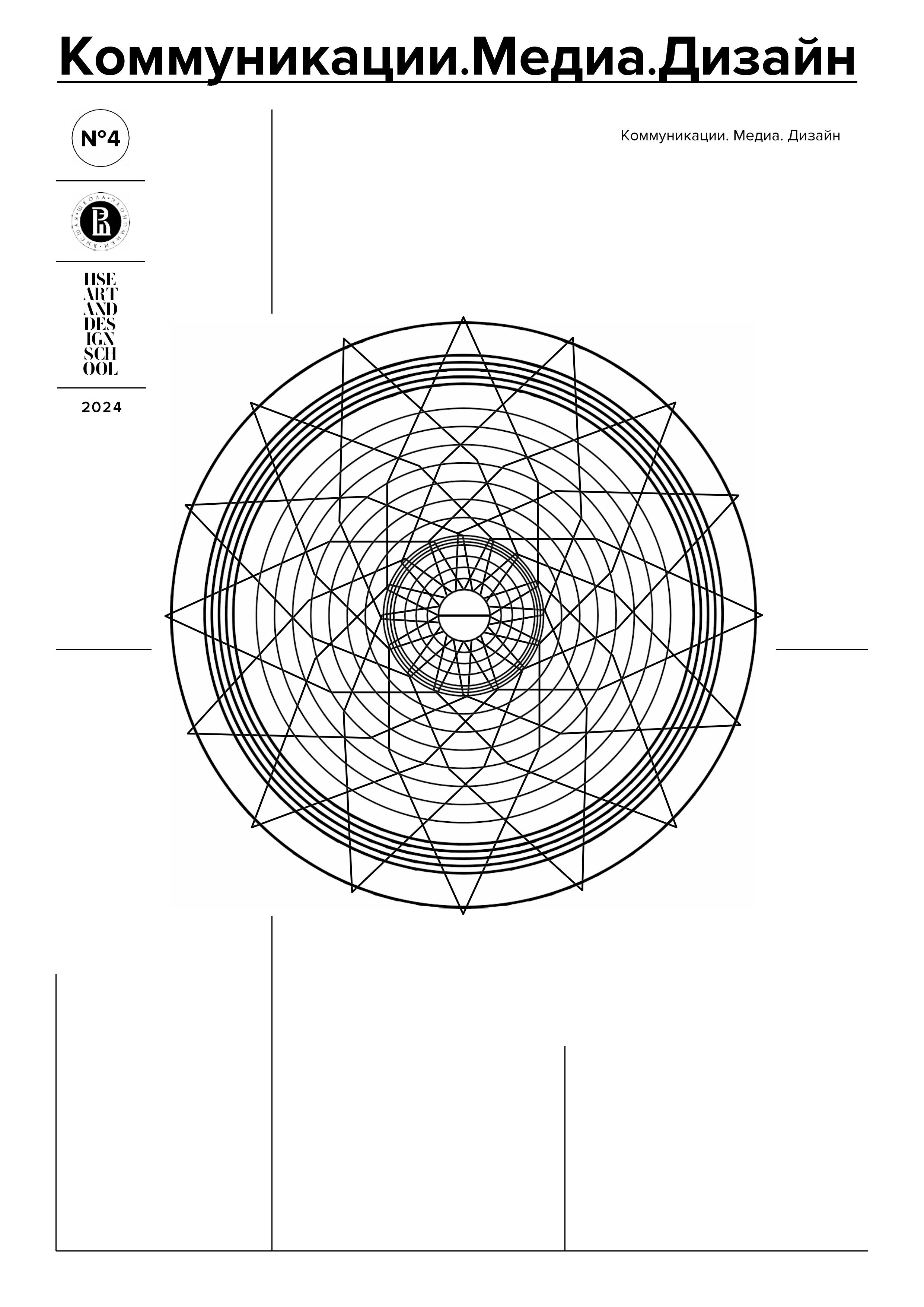Development of Digital Marketing Toolkit for Media Promotion and Determination of Synergetic Effects of the Instruments’ Complex Application
Abstract
This research focuses on the digital promotion of media projects on the Russian market. The object of the study is the tools of Internet-promotion, and the subject is the principles of their functioning in a convergent environment of the media market. The main goal of the study is development and verification of the classification of digital promotion tools (‘digital toolkit’) and formation of hypotheses on synergetic effects of their combinations. The authors consider a substantial aray of articles, monographs and other previous studies for the development of a generalized classification of groups of promotion tools. Further on, with the help of in-depth expert semi-structured interviews with representatives of the Russian-language media market, the classification is tested, after which a number of groups are added to it, and a scheme of their interrelations is formed with highlighting of potential synergetic effects. The result of the study is the classification of tools for digital media promotion that includes twelve groups, as well as a scheme of their applicability in current marketing practice of media projects studied and a scheme of groups’ co-influence with an expanded description of the nature of this relation. After the analysis, four groups of hypotheses were formulated, with one main hypothesis of the study on the primacy of content in the media marketing strategy, and the other three groups focusing on the issues of prevalence, subjectively perceived effectiveness and potential synergetic effects of the integrated use of classification tools. This paper also presents the methodology for testing hypotheses in further research. The academic contribution of this research is that previously a systematic approach to the formation of such a classification was not applied, and the specifics of the media market were not taken into account when considering specialized markets. For the managerial application there is a developed set of tools that can be used as a roadmap for planning marketing activities and allocating budget, as well as the identified synergetic effects of tools in complex application.
Downloads
References
Амзин, А. (2010). Новостная интернет-журналистика. Версия 2010122. https://journ.chuvsu.ru/images/stories/book/amzin_nov_int.pdf
Капустина, Л. М., Мосунов, И. Д. (2015). Интернет-маркетинг. Теория и практика продвижения бренда в Сети. Издательство Уральского государственного экономического университета.
Лободенко, Л. К. (2014). Особенности использования рекламы в коммуникационной политике интернет-СМИ. Вестник Южно-Уральского государственного университета. Серия: Лингвистика, 11(2), 5–9. https://vestnik.susu.ru/linguistics/article/view/2328?ysclid=m5ar3r2r6a397972080
Пирогова, Ю. К. (2008). Взгляд на рекламу с позиций различных субъектов рекламного рынка. Реклама. Теория и практика, (3), 134–142. EDN: JVKWCZ
Чальцев, В. С., Прохорова, Т. Б. (2020). Разработка классификации инструментов продвижения медиапроектов в сети интернет. Коммуникации. Медиа. Дизайн, 5(2), 28–45. https://cmd-journal.hse.ru/article/view/11510
Шагдарова, Б. Б. (2017). Новостные агрегаторы в Интернете. Вестник Бурятского государственного университета. Язык. Литература. Культура, (1), 66–76.
Ansari, A., Essegaier, S., Kohli, R. (2020). Internet recommendation systems. Journal of Marketing research, 37(3), 363–375. https://doi.org/10.1509/jmkr.37.3.363.18779
Arrese, A., Kaufmann, J. (2016). Legacy and native news brands online: Do they show different news consumption patterns. International Journal of Media Management, 18(2), 75–97. https://doi.org/10.1080/14241277.2016.1200581
Cheng, Z., Liu, Y., Wu, X., Hua, X. (2019). Video eCommerce: towards online video advertising. Proceedings of the 24th ACM international conference on Multimedia (MM '16) (pp. 1365–1374). Association for Computing Machinery. https://doi.org/10.1145/2964284.2964326
Hollebeek, L. D., Macky, K. (2019). Digital content marketing’s role in fostering consumer engagement, trust, and value: framework, fundamental propositions, and implications. Journal of Interactive Marketing, 45(1), 27–41. https://doi.org/10.1016/j.intmar.2018.07.003
Idrysheva, Z., Tovma, N., Abisheva, K., Murzagulova, M., Mergenbay, N. (2019). Marketing communications in the digital age. Innovative Technologies in Environmental Science and Education (04044). E3S Web of Conferences. https://doi.org/10.1051/e3sconf/201913504044
Jensen Schau, H., Gilly, M. C. (2003). We are what we post? Self-presentation in personal web space. Journal of consumer research, 30(3), 385–404. https://doi.org/10.1086/378616
Kannan, P. K., Li, ‘Alice’ H. (2017). Digital marketing: A framework, review and research agenda. Journal of Business Research, 34(1), 22–45. https://doi.org/10.1016/j.ijresmar.2016.11.006
Key, T. M., Czaplewski, A. J. (2017). Upstream social marketing strategy: An integrated marketing communications approach. Business Horizons, 60(3), 325–333. https://doi.org/10.1016/j.bushor.2017.01.006
Kozinets, R. V. (2002). The field behind the screen: Using netnography for marketing research in online communities. Journal of marketing research, 39(1), 61–72. https://doi.org/10.1509/jmkr.39.1.61.18935
Krishen, A. S., Dwivedi, Y. K., Bindu, N., Kumar, K. S. (2021). A broad overview of interactive digital marketing: A bibliometric network analysis. Journal of Business Research, 131, 183–195. https://doi.org/10.1016/j.jbusres.2021.03.061
Lamberton, C., Stephen, A.T. (2016). A thematic exploration of digital, social media, and mobile marketing: Research evolution from 2000 to 2015 and an agenda for future inquiry. Journal of Marketing, 80(6), 146–172. https://doi.org/10.1509/jm.15.0415
Lasswell, H.D. (1948). The structure and function of communication in society. New York: The communication of ideas, 37(1), 136–139.
Lynch, Jr. J. G., Ariely, D. (2000). Wine online: Search costs affect competition on price, quality, and distribution. Marketing science, 19(1), 83–103. https://doi.org/10.1287/mksc.19.1.83.15183
Peter, M. K., Kraft, C. (2017). Streitenberger. Forschungsresultatezum Stand der Digitalen Transformation, KMU-Transformation: Als KMU die Digitale Transformation erfolgreichumsetzen. Forschungsresultate und Praxisleitfaden [Streitenberger. Research results on the state of digital Transformation, SME Transformation: Successfully implementing the digital transformation as an SME. Research results and practical guidelines]. FHNW.
Peter, M. K., Vecchia, M. D. (2021). The Digital Marketing Toolkit: A Literature Reviewfor the Identification of Digital Marketing Channels and Platforms. New Trends in Business Information Systems and Technology. Digital Innovation and Digital Business Transformation. Studies in Systems, Decision and Control, 294, 251–267. http://dx.doi.org/10.1007/978-3-030-48332-6_17
Prokopenko, O., Larina, Y., Chetveryk, O., Kravtsov, S., Rozhko, N., Lorvi, I. (2019). Digital-Toolkit for Promoting Tourist Destination. International Journal of Innovative Technology and Exploring Engineering (IJITEE), 8(1)2, 4982–4987. https://doi.org/10.35940/ijitee.l3745.1081219
Schlosser, A. E. (2005). Posting versus lurking: Communicating in a multiple audience context. Journal of Consumer Research, 32(2), 260–265. http://dx.doi.org/10.1086/432235
Taiminen, H.M., Karjaluoto, H. (2015). The usage of digital marketing channels in SMEs. Journal of Small Business and Enterprise Development, 22(4), 633–651. http://dx.doi.org/10.1108/JSBED-05-2013-0073
Trusov, M., Bodapati, A. V. (2010). Bucklin R. E. Determining influential users in internet social networks. Journal of marketing research, 47(4), 643–658. http://dx.doi.org/10.2139/ssrn.1479689
Copyright (c) 2024 HSE University

This work is licensed under a Creative Commons Attribution 4.0 International License.

